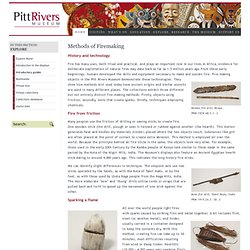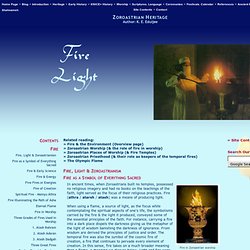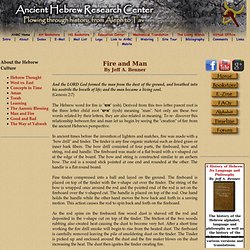

How to Start a Fire Without Matches. 9 Ways to Make Fire Without Matches. What Should I Do?

Videos that teach us other methods of creating fire by Jason Wiskerchen Wednesday, October 24, 2012, 8:38 PM As we look at preparing for uncertain times, we seek to have the resources on hand to weather the storm and be more resilient in our daily lives. We store water and put food away for shortages or emergency situations. Knowledge and skills acquisition is a topic that resonates greatly with the Peak Prosperity community.
Yes, yes – matches and lighters are bountiful and cheap. So here I present the nine great video tutorials on how to start a fire without the use of matches or lighters. Friction-Based Fire Making Bow Drill The bow drill is probably the easiest of the friction-based methods, but it also requires the most components. Hand Drill It's a bit more work than the bow-drill method, but the hand drill is an effective way to start a fire going if you don't have access to cordage or the other components of the bow-drill system. Methods of Making Fire - Pitt Rivers Museum. History and technology Fire has many uses, both ritual and practical, and plays an important role in our lives.In Africa, evidence for deliberate exploitation of natural fires may date back as far as 1.5 million years ago.From these early beginnings, humans developed the skills and equipment necessary to make and sustain fire.

Kamba fire drill, Kenya, PRM 1928.48.3.1-.2Fire-making objects in the Pitt Rivers Museum demonstrate these technologies. They show how methods still used today have ancient origins and similar utensils are used in many different places. The collections exhibit three different but not entirely distinct fire-making methods: Firstly, objects using friction; secondly, tools that create sparks; thirdly, techniques employing chemicals.
Fire from friction Many peoples use the friction of drilling or sawing sticks to create fire. Kota fire drill, Tamil Nadu, India PRM 1919.26.3 .1& .3We can identify slight differences in technique. Sparking a flame. Fire & Light in Zoroastrianism. Kinds of Fire. Energy of Creation. Related reading:» Fire & the Environment (Overview page)» Zoroastrian Worship (& the role of fire in worship)» Zoroastrian Places of Worship (& Fire Temples)» Zoroastrian Priesthood (& their role as keepers of the temporal fires)» The Olympic Flame In ancient times, when Zoroastrians built no temples, possessed no religious imagery and had no books on the teachings of the faith, light served as the focus of their religious practices.

Fire (athra / atarsh / atash) was a means of producing light. About the Ancient Hebrew Culture. And the LORD God formed the man from the dust of the ground, and breathed into his nostrils the breath of life; and the man became a living soul.

(Genesis 2:7) The Hebrew word for fire is "אש" (esh). Derived from this two letter parent root is the three letter child root "איש" (iysh) meaning "man". Not only are these two words related by their letters, they are also related in meaning. ANCIENT HISTORY: DISCOVERY AND CREATION OF FIRE. As the early Hominids moved from the tropics into colder regions, they needed to adjust to new often harsh regions conditions(see previous video about it-Survival During the Stone Age).

Perhaps the most important to their to their ability is to adapt the use of fire. The systematic use of fire made it possible to provide a source of both light and heat within the cave to the structure which they live. The development of tools and the use of fire are the two important technological innovations/discovery during the Paleolithic period, reminds us how crucial the ability to adapt was to human survival. The most recent Ice Age began about 100,000 B.C. and reached it's coldest period between 20,000 and 10,000 B.C. Sheets of Thick Ice covered large parts of Europe, Asia, and North America. Early Hominids experienced natural fires caused by lightning and learned the benefits of them. Fire Origins. What was perhaps the most meaningful discovery ever made, early man exited the safety and shelter of his prehistoric cave, struck two stones together, and for the first time in history created fire.

Moments later, man created fire for the second time and, after all the screaming and excited yelling had died down, the third, fourth, and fifth time. "Fire, and its ability to light any object not currently on fire instantly on fire, completely changed human existence," noted archaeologist and historian Phillip Krensen said. "Not only could man now defend himself from dangerous predators, but he could also cook their meat, then get up from the bonfire, smile briefly to himself, and spend the rest of the evening seeing what else there was around to burn down.
" "Our findings indicate that this ranged widely from brittle husks of corn, to small branches and twigs, to other unsuspecting Homo erectus within arm's reach," Krensen added.